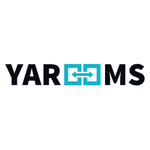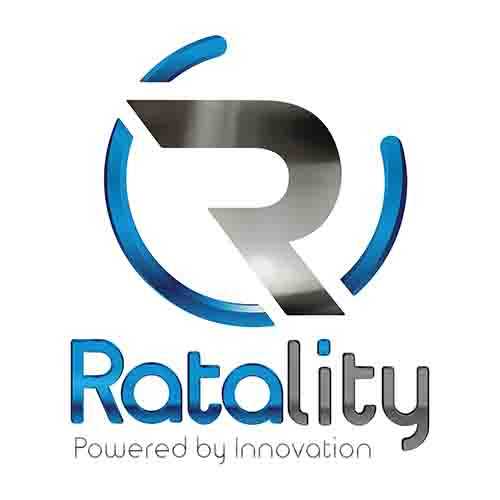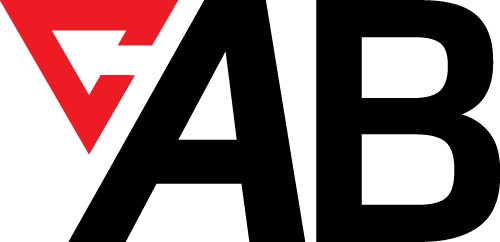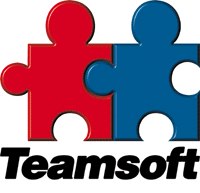What Is Scheduling Software?
Scheduling software is a sort of computer program that helps individuals and organizations manage their time and plan their daily responsibilities. It includes a variety of tools and capabilities for creating, editing, and tracking schedules, appointments, and deadlines. One of the primary purposes of scheduling software is to automate the process of creating and managing schedules.
Users can enter their chores, appointments, and other significant dates into the software, and it will create a schedule based on the information provided. This eliminates the need for manual scheduling, saving time and lowering the chances of double reservations or missed deadlines. Scheduling software also allows you to establish reminders and notifications for forthcoming chores and appointments.
This feature helps customers keep on track with their schedules and ensures that crucial tasks are not overlooked. Another advantage of scheduling software is that it can be accessed from anywhere with an internet connection. This is especially important for firms with remote or mobile personnel, as it keeps everyone linked and on the same schedule.
Furthermore, many scheduling software packages offer collaboration features, allowing several users to access and modify a shared schedule. This is especially useful for team projects and meetings because it keeps everyone on the same page and reduces the need for frequent email exchanges. Some scheduling software also includes reporting and analytics functions, which provide a detailed analysis of individual and team productivity, as well as areas for development. This data can help firms make strategic decisions and optimise their schedules for maximum efficiency.
What Are The Recent Trends In Scheduling Software?
Scheduling software has transformed how firms manage their time and resources. With the ongoing evolution of technology, scheduling software has evolved with new features and capabilities to satisfy the expectations of today's fast-paced business environment. As a buyer, you must stay up to date on the newest scheduling software developments in order to make an informed purchase for your company.
Here are some of the recent trends in scheduling software that you should be aware of.
1. Cloud-Based Solutions: One of the most significant changes in scheduling software is the migration to cloud-based solutions. This means that the program is hosted in the cloud and accessible from anyone with an internet connection. As a result, businesses now have more flexibility and convenience because they can use their scheduling tools from anywhere. Cloud-based scheduling software also provides greater scalability, security, and cost efficiency than on-premise systems.
2. Artificial Intelligence (AI): AI-powered scheduling software is becoming increasingly popular due to its ability to automate and optimize scheduling activities. These technologies use algorithms to analyze data and make better informed decisions, resulting in more efficient and precise schedules. AI also allows the program to adapt to changing situations and make real-time adjustments, resulting in increased overall efficiency.
3. Mobile Integration: With the advent of remote and flexible work arrangements, mobile integration has become an essential component in scheduling software. Mobile apps enable employees to check their schedules, request time off, and receive updates while on the go. This makes it easier for firms to manage their personnel, particularly those who have employees in multiple locations.
4. Integration With Other Tools: Scheduling software increasingly integrates with other corporate tools such as project management software, CRM systems, and payroll systems. This streamlines workflows and increases data accuracy by allowing information to be smoothly shared across multiple systems.
5. Emphasizes Employee Well-Being: Employee well-being has emerged as a primary priority for firms, and scheduling software is following suit. Many current scheduling applications include features like shift swapping, self-scheduling, and time-off requests, which provide employees more control over their schedules. This can result in improved job satisfaction and productivity.
Benefits Of Using Scheduling Software
Scheduling software has become a vital tool for organizations of all sizes, allowing them to properly manage and plan appointments, activities, and events. Its advantages extend far beyond streamlining the scheduling process; it can save time, increase productivity, and improve overall operations.
Let's explore, we'll go over the primary benefits of using scheduling software and why it's a good investment for any business.
1. Streamlined Scheduling Process: The most evident advantage of scheduling software is its ability to simplify the scheduling process. Instead than manually entering appointments or events into a calendar, the program automates the process, making it faster and more precise. It also enables for simple rescheduling and updating, which reduces the possibility of errors or double bookings.
2. Improved Time Management: Scheduling software allows you to conveniently view all of your appointments and chores in one location, giving you a better grasp of your schedule. This can help you better organize and manage your time, preventing you from missing critical meetings or deadlines. You may also set reminders to ensure that you never forget a future appointment.
3. Increased Productivity: Scheduling software can boost productivity greatly by automating the process and offering a clear overview of your schedule. It reduces the need for manual administrative activities, freeing you your time to focus on more critical ones. It also improves collaboration and communication with team members, making it easier to organize meetings and work on projects.
4. Improved Customer Experience: Effective scheduling is critical for appointment-based organizations including healthcare institutions, hairdressers, and consulting firms. Customers can make appointments online at their convenience, avoiding the need for phone calls or emails. This not only improves the consumer experience, but it also helps businesses stay organized and on track with their appointments.
5. Real-Time Updates And Accessibility: Cloud-based scheduling software provides real-time changes and accessibility. This means you can check your schedule from anywhere, whether you're at work or on the go. It also enables various team members to see and update the schedule in real time, which improves internal communication and collaboration.
6. Customization & Analytics: Most scheduling software has adjustable capabilities, allowing firms to tailor it to their own requirements and preferences. This includes scheduling various types of appointments, allocating different team members, and organizing reoccurring events. Scheduling software also provides analytics and reports, which help firms understand their scheduling trends and make data-driven decisions.
Important Factors To Consider While Purchasing Scheduling Software?
When selecting scheduling software, it's critical to evaluate a few essential elements to guarantee that you get the finest option for your individual requirements.
Here are some crucial elements to consider while shopping for scheduling software:
1. Features And Functionality: Before making a purchase, you should extensively investigate the features and functionality of several scheduling software solutions. Consider the precise capabilities you require, such as appointment scheduling, automated reminders, and interaction with other platforms. Make sure the software you purchase has all of the capabilities you need to streamline your scheduling process.
2. User-Friendliness: Ease of use is critical for scheduling applications. Look for an intuitive and easy-to-use UI. It should also be easily available to both you and your clients, with choices for online booking and self-service scheduling.
3. Customization: Because each organization has distinct scheduling requirements, it is critical to select software that is easily configurable. Look for ways to customize the software to your company's identity and special scheduling needs. This will ensure that the software fits seamlessly with your business activities.
4. Mobile Accessibility: As remote work and mobile usage become more common, scheduling software that is mobile-friendly is vital. This will enable you and your team to handle appointments and schedules while on the road, providing greater flexibility and convenience.
5. Pricing: Determine your budget and examine the costs of various scheduling software choices. Keep in mind that, while some may be less expensive, they may also lack vital features. Higher-priced choices, on the other hand, may include all of the functionality you require but may not be economically viable for your company. Choose the one that provides the most value for money.
6. Customer Help: When investing in software, it is critical to have dependable customer help in the event of technical problems or concerns. Look for solutions that offer 24-hour customer assistance via several channels such as chat, email, or phone. This ensures that you can get help whenever you need it.
7. Scalability: As your company expands, your scheduling requirements may also grow. As a result, it's critical to select software that can grow alongside your company. Look for choices that provide add-on functionality or different pricing tiers to meet your evolving requirements.
Consider these essential elements to ensure that you invest in the correct scheduling software that will effectively streamline your company's scheduling operations and enhance overall productivity. Take your time researching and comparing several choices to find the best fit for your business.
What Are The Key Features To Look For In Scheduling Software?
When looking for the ideal scheduling software for your organization, there are a few crucial things to consider. These features ensure that the software suits your individual requirements and streamlines your scheduling procedure. As a professional content writer in the technology business, I've investigated and highlighted the key aspects that consumers should look for when comparing scheduling software choices.
1. User-Friendly Interface: The most significant feature is a user-friendly interface. The software should be simple to u,se and understand, even for non-technical people. Look for clean layouts, simple vocabulary, and an intuitive design to guarantee that your team can quickly learn and use the product.
2. Flexible Scheduling Options: Each business has distinct scheduling requirements. As a result, it is critical to look for software that provides a range of scheduling options to meet diverse sectors and job types. The program should be flexible enough to satisfy your needs for daily, weekly, or monthly scheduling.
3. Integration Capabilities: In today's digital environment, scheduling software must interact with other tools and systems utilized in your firm. This ensures that all of your data is synced and up to date, reducing the likelihood of errors and saving time by eliminating human data entry.
4. Multi-Platform Access: As businesses grow more mobile, scheduling software must be accessible across numerous platforms, such as desktops, laptops, tablets, and smartphones. This allows your staff to access and amend schedules while on the go, resulting in more effective communication and coordination.
5. Automated Reminders And Notifications: One of the primary benefits of scheduling software is that it reduces no-shows and increases productivity. Look for software that provides automated reminders and notifications to both employees and clients to reduce the likelihood of missed appointments.
6. Customization Options: Every organization has its own distinct processes and preferences. Customization features in scheduling software enable you to modify the software to your exact requirements, such as selecting specific time slots, color-coding, and assigning numerous staff members to a single appointment.
7. Reporting and Analytics: To monitor the success and efficacy of your scheduling process, search for software that includes reporting and analytics features. These tools provide useful insights into your scheduling habits and point up opportunities for development.
8. Security and Privacy: Scheduling software stores sensitive information including customer data and employee schedules. To protect your personal information, you must ensure that the software includes strong security measures such as data encryption and user access controls.
By carefully analyzing these critical qualities, you may choose the scheduling software that best matches your company's specific demands and improves operational efficiency. Remember to read reviews and compare prices to help you make an informed selection. Happy scheduling!
Why Do Businesses Need Scheduling Software?
Scheduling software has become an invaluable resource for businesses across industries. Its major job is to efficiently manage and organize personnel schedules, but it does considerably more than that. Scheduling software, with its comprehensive features and capabilities, provides numerous benefits to businesses of all sizes. First and foremost, scheduling software boosts productivity while saving time.
Businesses can minimize the time-consuming job of manually scheduling by implementing a central platform for developing and managing schedules. This saves time for both managers and employees, who no longer have to continuously check their schedules or request time off. In addition, scheduling software improves team communication and collaboration.
Employees can simply adjust their schedules using the shift swapping and time-off request tools, while managers have complete visibility and control. This lowers the likelihood of scheduling problems and guarantees that shifts are always covered. Furthermore, scheduling software assists with labor cost control. Businesses can minimize overstaffing and understaffing by precisely recording hours worked and offering insights into labor expenditures.
This can lead to huge cost reductions and improved profits. Another significant advantage of scheduling software is its optimization capabilities. With the flexibility to include staff talents, availability, and preferences, the program may generate schedules that are tailored to the needs of the organization. It can also include high business hours, busy seasons, and other factors that may influence workforce requirements.
Furthermore, scheduling software provides useful reporting and analytics capabilities. This enables firms to monitor important performance measures including employee usage, attendance, and overtime hours. A greater understanding of these measures can lead to more informed decisions and improved overall business operations. Last but not least, scheduling software fosters a more positive and structured working environment.
Employees can feel more engaged and valued by decreasing managers' administrative burdens and implementing a transparent and effective scheduling process. This can lead to higher job satisfaction and, eventually, better customer service.
How Much Time Is Required To Implement Scheduling Software?
The time required to deploy scheduling software varies according to the program chosen, the organization's size and complexity, and the level of customization necessary. The implementation procedure can last anything from a few weeks to many months. First, it is critical to establish realistic expectations and recognize that adopting new software is a major undertaking that demands careful planning and organization.
It is critical to include important stakeholders in the implementation process, such as employees, managers, and IT personnel, to ensure that their needs are satisfied and their feedback is considered. The initial step in establishing scheduling software is usually data migration. This includes moving existing schedules and employee information to the new system. The time necessary for this stage will vary according to the amount of data and its complexity.
Next, the program must be adjusted to meet the organization's specific requirements. This may entail creating employee profiles, defining roles and permissions, and customizing scheduling templates. This process may take several weeks, depending on the extent of personalization necessary. Once configured, the program must be tested to ensure that it functions properly and meets the needs of the organization.
This may include a trial phase with a small group of employees before the software is implemented throughout the organization. Training is a critical component in the implementation process. Employees will need to be instructed on how to use the program successfully to schedule shifts, seek time off, and communicate with their colleagues.
The time necessary for training will be determined by the software's complexity as well as the level of assistance and resources offered by the software supplier. Overall, deploying scheduling software can take a few weeks to a few months, depending on the organization's specific requirements. To ensure that the software is successfully implemented and adopted, it is critical to plan ahead of time, include key stakeholders, and provide adequate training.
What Is The Level Of Customization Available In Scheduling Software?
The level of customization available with scheduling software varies depending on whatever software you use. However, most scheduling software provides a high level of customization to accommodate the specific needs of various enterprises and industries.
Some typical ways to customize scheduling software are:
1. Customizable user: Permissions allow businesses to control who has access to specific schedules or features inside the platform. This improves security and organization within the corporation.
2. Appointment Sorts: Scheduling software enables organizations to create many sorts of appointments based on their unique services or requirements. This enables more precise and efficient scheduling for various types of appointments.
3. Calendar Views: Businesses may usually tailor the calendar view to their preferences, whether it's weekly, monthly, or daily. This leads to a better ordered and visually pleasing timetable.
4. Notifications And Reminders: Many scheduling software packages include configurable notifications and reminders that can be issued to both the business and the consumer to guarantee that appointments are not missed.
5. Integrations: Customization extends beyond the scheduling software's internal functionality. Many programs integrate with other software or apps, allowing firms to streamline procedures and boost productivity.
6. Branding: Some scheduling software allows you to add your own branding, such as logos and colors, to create a more customized experience for both businesses and customers.
Overall, scheduling software provides a great level of customization to match the specific requirements of enterprises. Before selecting a program, consider which features are most important to your organization and ensure that the software allows for customization in those areas.
Which Industries Can Benefit The Most From Scheduling Software?
Scheduling software has become a vital tool for businesses of all sizes and industries. It simplifies the process of managing appointments, tasks, and personnel schedules, hence increasing overall productivity and profitability. To make an informed purchase, a buyer must first learn which industries can profit the most from scheduling software.
Here are the top industries that will profit the most from utilizing scheduling software:
1. Healthcare: Appointments and schedules are crucial for providing effective patient care. Scheduling software enables healthcare organizations to manage appointments, allocate employees to different schedules, and track their availability in real time. It can also send automatic reminders to patients, lowering no-show rates and making better use of medical resources.
2. Service-Based Businesses: Scheduling software transforms service-based businesses like salons, spas, and law offices. It may plan appointments, send reminders, and manage personnel schedules, ensuring that no appointments overlap and that resources are used efficiently. Furthermore, it enables these enterprises to provide online booking services and take payments, hence enhancing client happiness and revenue.
3. Education: School and university administrators are increasingly using scheduling software to manage class, exam, and teacher schedules. It can also improve communication among teachers, students, and parents, making it easier to update and manage schedules.
4. Retail: As e-commerce and online shopping become more popular, merchants must properly manage their inventory, employee schedules, and customer appointments. Scheduling software can automate the process of scheduling employees to maintain adequate coverage, track inventory levels, and assist shops in managing customer appointments to provide tailored shopping experiences.
5. Transportation And Logistics: Companies must properly manage complex timetables, routes, and drivers. Scheduling software helps optimize routes, track vehicle availability, and manage driver schedules, resulting in faster response times and better timeliness.
Conclusion
To summarize, investing in scheduling software can significantly improve the organization and productivity of any business. With so many options available, purchasers must carefully analyze their individual requirements and select software that efficiently matches those objectives. Key considerations include features, ease of use, compatibility, and customer support.
Furthermore, purchasers can take advantage of free samples and demos to obtain a better knowledge of the software's features and design. Businesses that carefully evaluate all alternatives and make an informed decision should expect increased productivity, simpler processes, and improved communication when using scheduling software. Thank you for reading our buyer's guide; we hope it has given you useful information to assist you make the best selection for your business.






















